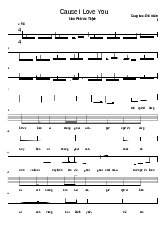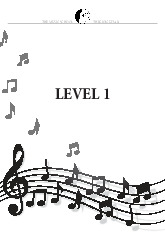



















Preview text:
Contens
How to read exercises........................................................................1
Note names in both keys ..................................................................2
Circle of fifth Theory...........................................................................3
How to understand and read "KEY".................................................4
Exercises on white keys..................................................................5
Exercises with the change of thumb..........................................13
Introductory Exercises Scales - Chords - Arpeggios................19
Exercises on Scales (3 different patterns).................................22
Exercises scales for both hands...................................................30
Exercises scales for both hands in the opposite direction...33
Exercises on chords in 2/4 meter................................................36
Exercises on chords in 3/4 meter................................................39
Arpeggios for both hands..............................................................42
Arpeggios in 3/4 meter..................................................................45
Arpeggios in 2/4 meter..................................................................51
Arpeggios dominant (7).................................................................54
Peter Music Publishing - All Rights Reserved 2021 How to read exercises
The treble clef is played by the right hand and fingering is indicated above each note Right Hand
The bass key is played by the left
hand and the fingering is signed above each note Left Hand
There is a different meter for each
exercise, which is always described
next to the treble and bass clef 1
Note names in both keys Treble Clef Bass Clef 2 Circle of fifth
All the exercises are arranged in a circle of fifths, which
improves our awareness of the key and influences our
development and awareness of playing 3
How to understand and read "KEY"
Tones are nothing more than scales, chords, and scales that begin with a
particular sound on the keyboard that the key tells us about.
In keys there is a sharp symbol (#) and a flat symbol (b)
Sharp (#) raises the sound by a semitone and flats (b) lower it by a semitone
Sharp (#) picks up that sound which lies on the same line or field it is the same with flats (b). Example:
Sharp (#) lies on the fifth line, therefore the F sound is
raised to F# the same is true for the C -> C# sound
Flats (b) lies on the fourth field, therefore the E
sound is lowered to Eb the same with B -> Bb
Each Sharps and Flats means that we play a black key instead of a white key 4
1. Exercises on white keys 5
2. Exercises on white keys 6
3. Exercises on white keys 7
4. Exercises on white keys 8
5. Exercises on white keys 9 6. Exercises on white keys 10 7. Exercises on white keys 11 12
1. Exercises with change of thumb 13
2. Exercises with change of thumb 14 15
3. Exercises with change of thumb 16 17
4. Exercises with change of thumb 18 1. Introductory exercises Scales - Chords - Arpeggios 19




